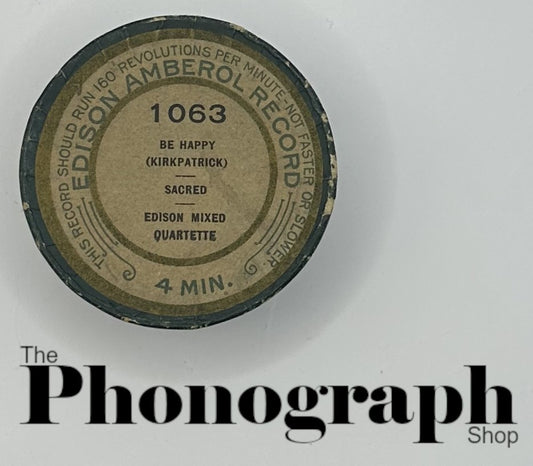Collection: Amerbol Cylinder Records
Edison Amberol 4-Minute Wax Cylinder Records
Edison Amberol Records were a type of phonograph cylinder introduced by Thomas A. Edison, Inc. in 1908 as a technological advancement over the earlier 2-minute cylinders. These records were among the first commercial sound recordings capable of playing for approximately 4 minutes, doubling the duration of their predecessors and offering listeners a more immersive musical or spoken-word experience.
Material and Construction
Unlike the earlier 2-minute brown or black wax cylinders, the 4-minute Amberol cylinders were made from a harder black wax compound, which allowed for finer groove spacing and a slower playing speed. This wax was still relatively fragile and susceptible to damage from improper handling or playback on incompatible equipment.
Playback Specifications
-
Duration: About 4 minutes
-
Grooves per Inch: 200 (compared to 100 grooves per inch on 2-minute records)
-
Playback Speed: ~160 RPM
-
Required Equipment: Special 4-minute reproducers (like the Edison Model H) and gears to accommodate the finer grooves
Because of the groove density, these cylinders required phonographs fitted with appropriate gearing and stylus to prevent damage and ensure clear playback.
Content and Performance
Amberol records featured a wide variety of content, including:
Many prominent recording artists of the early 20th century, such as Billy Murray and Ada Jones, were featured on Amberol cylinders, capturing the popular culture of the era.
Legacy
Although the Edison Amberol 4-minute wax cylinders represented a major improvement in playback time and sound quality, they were eventually replaced by the Blue Amberol Records (starting in 1912), which used a more durable celluloid surface over a plaster core. These newer records were less prone to wear and breakage.
Collectors today prize Edison Amberol cylinders for their historical value, unique performances, and their role in the evolution of recorded sound technology.
 Sold out
Sold out
